Introduction of Kitchen Sinks And
The kitchen is often considered the heart of the home Kitchen Sinks And, not just because it’s where food is prepared, but because it’s where families and friends gather. It’s the space that brings people together, whether for a quick breakfast or a special holiday dinner. And at the core of every kitchen lies the kitchen sink, a versatile fixture that is crucial to both functionality and design. The kitchen sink is more than just a basin for washing dishes. It’s a place to prep ingredients, cleanutensils, and even entertain guests while preparing a meal. In this book, we’ll take an in-depth look at kitchen sinks and the essential elements that complete the black kitchencabinet space. From countertops to faucets, kitchen appliances to organization, we’ll guide you through creating a kitchen that is as functional as it is beautiful.
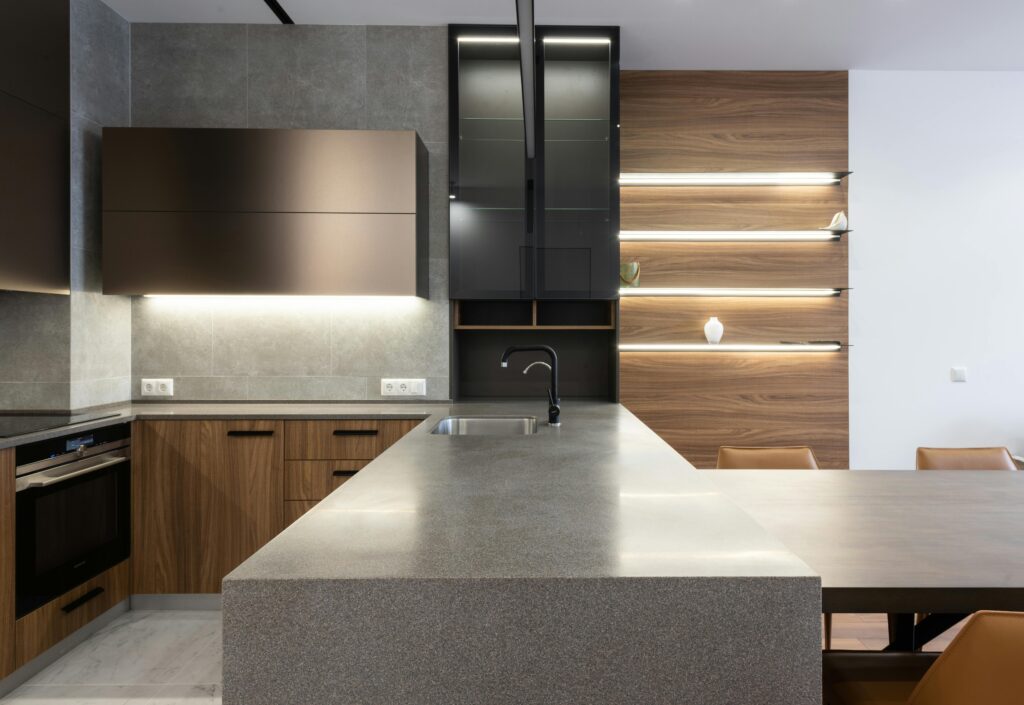
The Role of Kitchen Sinks
When we think of kitchen sinks, we often think of washing dishes, but their role in the Kitchen Sinks And is far more complex. A well-chosen sink can elevate the look of your kitchen while offering practicality that supports everyday tasks. The kitchen sink is often the focal point of yourworkspace, where you prep vegetables, clean fruits, wash dishes, and occasionally even rinse off your pet after a muddy walk. The sink’s size, style, and material can impact the overall design and functionality of your kitchen. For example, a deep farmhouse sink allows for larger pots and pans to be cleaned with ease, while an undermount sink offers a sleek and modern appearance. The materials used for Kitchen Sinks vary from stainless steel and cast iron to composite granite, and each has its own benefits. Choosing the right sink is about finding a balance between style and practicality that complements your overall kitchen design.
Exploring Kitchen Countertops
Countertops are the unsung heroes of every kitchen. They provide the space needed for preparing meals, serving snacks, and often even gathering around for casual conversations. The choice of countertop material is essential, not just for aesthetics but also for durability and ease of maintenance. For instance, granite countertops are well-loved for their natural beauty and resilience, making them perfect for kitchens that experience heavy use. Quartz countertops, on the other hand, are non-porous and incredibly easy to clean, making them a popular choice for those looking for a low-maintenance option. Marble offers timeless elegance, but requires a bit more attention when it comes to upkeep. Laminate, while more affordable, provides a wide range of colors and patterns to suit various kitchen styles. Whether you want a sleek, modern finish or a more traditional look, the right countertop will complement your kitchen sink and enhance your cooking experience.
Kitchen Faucets: The Perfect Match
A faucet might seem like a small detail in the Kitchen Sinks And, but it plays a huge role in both function and style. The faucet you choose can have a big impact on the overall design and efficiency of your kitchen sink area. From traditional faucets to modern, high-tech models, there’s a wide range of choices to consider. Touchless faucets, for instance, offer the convenience of hands-free operation, which is particularly helpful when you’re handling raw food or have dirty hands. Pull-down orpull-out faucets allow for greater flexibility when rinsing dishes or washing vegetables, while single-handle faucets are known for their ease of use. When choosing a faucet, consider the material—brass, chrome, or brushed nickel—and how it will pair with your sink and the rest of your kitchen decor. It’s important that your faucet not only fits your aesthetic but also suits your daily needs.
Kitchen Appliances: Efficiency Meets Design
When it comes to outfitting a Kitchen Sinks And, appliances are the heart of its functionality. The right appliances can make cooking and cleaning easier, faster, and more enjoyable. From refrigerators to ovens, dishwashers to microwaves, each appliance has a specific role to play in your kitchen’s performance. When selecting kitchen appliances, it’s important to consider both their energy efficiency and their design. Energy-efficient appliances not only help you save on utility bills but also contribute to a greener, more sustainable home. For example, modern refrigerators with advanced cooling technology are designed to minimize energy consumption while keeping food fresh longer. Dishwashers with eco-settings can clean effectively while using less water and electricity. Additionally, the aesthetic appeal of appliances should not be overlooked. Stainless steel remains a popular choice for its sleek, modern look, but other finishes, such as matte black or custom paneling, allow for more personalized kitchen designs.
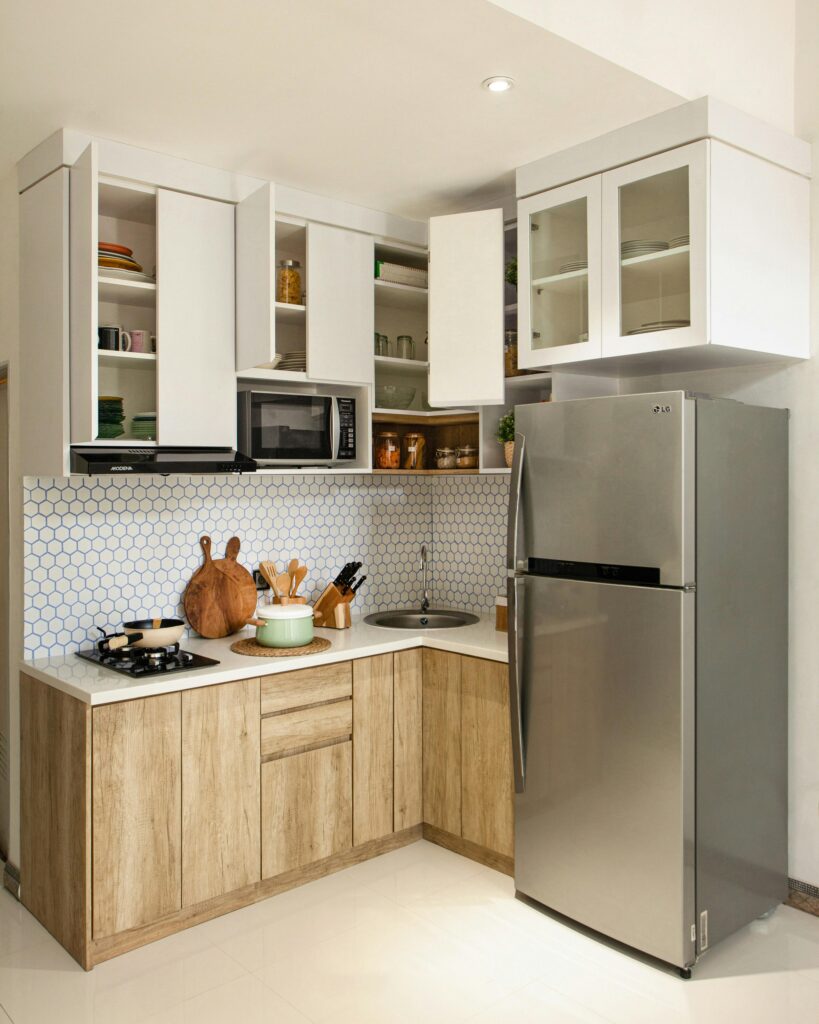
Kitchen Cabinets: Organization and Style
No kitchen is complete without the right cabinetry. Kitchen Sinks And cabinets serve as the backbone of your kitchen organization. They hold everything from dishes and glassware to cooking utensils and pantry items. The style, material, and layout of your cabinets can significantly impact both the functionality and visual appeal of your kitchen. Custom cabinets offer the ultimate flexibility in terms of design, allowing you to optimize your kitchen’s storage space and create a cohesive look. On the other hand, pre-made cabinets are a more cost-effective option that still provides a wide range of styles and finishes. Materials such as wood, laminate, and MDF are popular for their durability and versatility. If you’re looking to maximize storage, consider incorporating features like pull-out shelves, lazy Susans, and built-in organizers for pots and pans. Kitchen cabinets are not just storage spaces; they are essential to creating an organized, efficient, and stylish kitchen.
Kitchen Plumbing: The Unsung Hero
When it comes to Kitchen Sinks And installations, plumbing is one of the most essential—and sometimes overlooked—elements. From the kitchen sink to the dishwasher, refrigerator water lines, and faucets, a well-designed plumbing system ensures that your kitchen functions smoothly. Good plumbing isn’t just about convenience; it also affects water flow, water pressure, and overall kitchen cleanliness. Leaky faucets or clogged drains can lead to frustrating problems and expensive repairs, so it’s crucial to keep your plumbing in top condition. Regular maintenance such as checking for leaks, cleaning out the garbage disposal, and clearing any blockages in the sink will help avoid plumbing issues. For new installations, make sure your plumber follows local codes and uses high-quality materials. If you’re renovating your kitchen, this is a great opportunity to upgrade your plumbing system and ensure that it’s both efficient and up to date.
Kitchen Hardware: The Finishing Touches
When we think about kitchen hardware, we often focus on the cabinets and faucets, but there are many other hardware elements that contribute to the functionality and style of the space. These include drawer pulls, cabinet knobs, sink strainers, and the like. Hardware plays a significant role in the overall design of your kitchen. Whether you prefer a sleek, modern look with minimalistic handles or a more traditional style with ornate knobs, the hardware you choose can transform the atmosphere of your kitchen. Durable materials such as stainless steel, brass, or matte black are popular for their aesthetic appeal and longevity. Make sure the hardware you select matches the rest of your kitchen’s design for a cohesive look. Small details like the handles on your drawers and cabinets may seem insignificant, but they can make a big difference in elevating the overall style of your kitchen.
Kitchen Designs: Creating Your Ideal Space
Designing a kitchen can be an overwhelming process with so many decisions to make: the layout, the materials, the style, and the functionality. The key to designing an ideal kitchen is finding a balance between form and function. Whether you’re going for a traditional farmhouse look, a modern minimalist aesthetic, or a rustic vibe, the design of your kitchen should reflect your personal style and meet your practical needs. Start with the layout. Do you want an open kitchen that flows into the dining or living areas? Or do you prefer a more enclosed, private kitchen? Once you’ve settled on a layout, choose materials that complement your design vision—whether it’s the warmth of wood, the sleekness of marble, or the practicality of granite. Design elements such as lighting, color schemes, and textures also contribute to the overall feel of the space. Finally, make sure your kitchen light fixtures layout supports easy workflow between key areas like the sink, stove, and refrigerator.
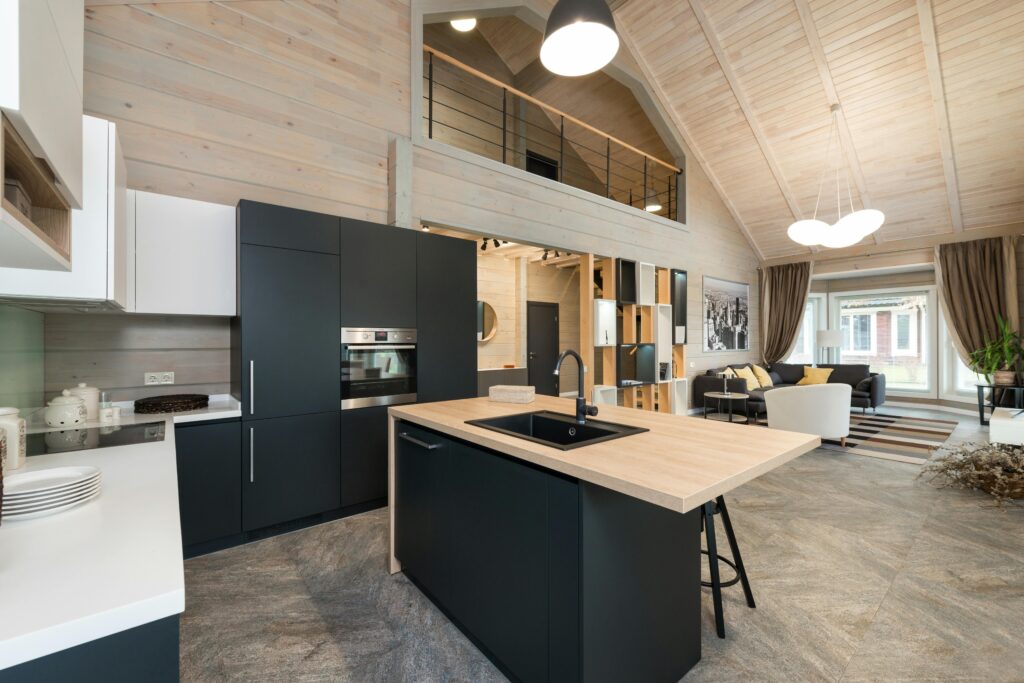
Kitchen Renovations: Transforming Your Space
Renovating a kitchen can be one of the most rewarding home improvement projects. A kitchen renovation gives you the opportunity to upgrade outdated fixtures, improve functionality, and refresh the design to match your evolving taste. However, before diving in, it’s important to plan thoroughly. Start by setting a budget and deciding which areas of the kitchen need the most attention. Are you focused on replacing old countertops or adding new cabinetry? Or perhaps you want to open up the space with a more modern, open-plan layout? You can also consider adding features like an island, a larger sink, or upgraded appliances. Remember that kitchen renovations can take time, and it’s important to set realistic expectations about the timeline and costs. With the right planning and execution, a kitchen renovation can significantly enhance the value of your home while making the space more enjoyable and functional.
Kitchen Decor: Adding Personality
The kitchen is no longer just a place to cook—it’s become a space where people gather, relax, and entertain. That’s why kitchen decor has become increasingly important. Just like any other room in your house, your kitchen should reflect your style and personality. There are plenty of ways to personalize your kitchen, from adding colorful accessories like a bright rug or pendant lighting to incorporating plants for a touch of greenery. For a more modern touch, consider sleek and simple decor that complements your minimalist kitchen design. On the other hand, a vintage-inspired kitchen can benefit from antique items or retro-style appliances. No matter the style you prefer, the key to great kitchen decor is balance. Don’t overcrowd your countertops with unnecessary items, and instead focus on quality pieces that enhance the space.
Kitchen Accessories: Making Life Easier
Kitchen accessories may seem like small additions, but they can make a world of difference in how your kitchen operates. Whether it’s a stylish cutting board, a dish rack that fits perfectly next to the sink, or a spice rack that keeps everything organized, these items can improve both the function and look of your kitchen. Some essential kitchen accessories include utensil holders, drawer dividers, and over-the-sink racks for additional storage space. Not only do they keep your kitchen organized, but they also make cooking and cleaning more efficient. If you love baking, consider adding a stand mixer or specialized baking tools. For the coffee lover, a sleek coffee maker or espresso machine can be both functional and decorative. These accessories, though small, help make your kitchen a more comfortable, functional, and enjoyable space.
Kitchen Fixtures: Functional and Stylish
The term “kitchen fixtures” refers to all the essential components that are built into the Chinese kitchen, such as sinks, faucets, light fixtures, and even your kitchen’s plumbing setup. These fixtures are often chosen for their practicality, but they can also be an integral part of your kitchen’s style. For example, modern light fixtures can dramatically change the look of your kitchen, while a well-designed faucet or sink can serve as a focal point in the room. When selecting kitchen fixtures, it’s important to think about both style and functionality. Fixtures should not only blend seamlessly with your overall design but also work well with your kitchen’s daily demands. Consider durable materials like stainless steel for sinks and faucets or energy-efficient LED lighting. Fixtures can be the perfect way to add that extra bit of flair to your kitchen while ensuring that your space is fully functional.
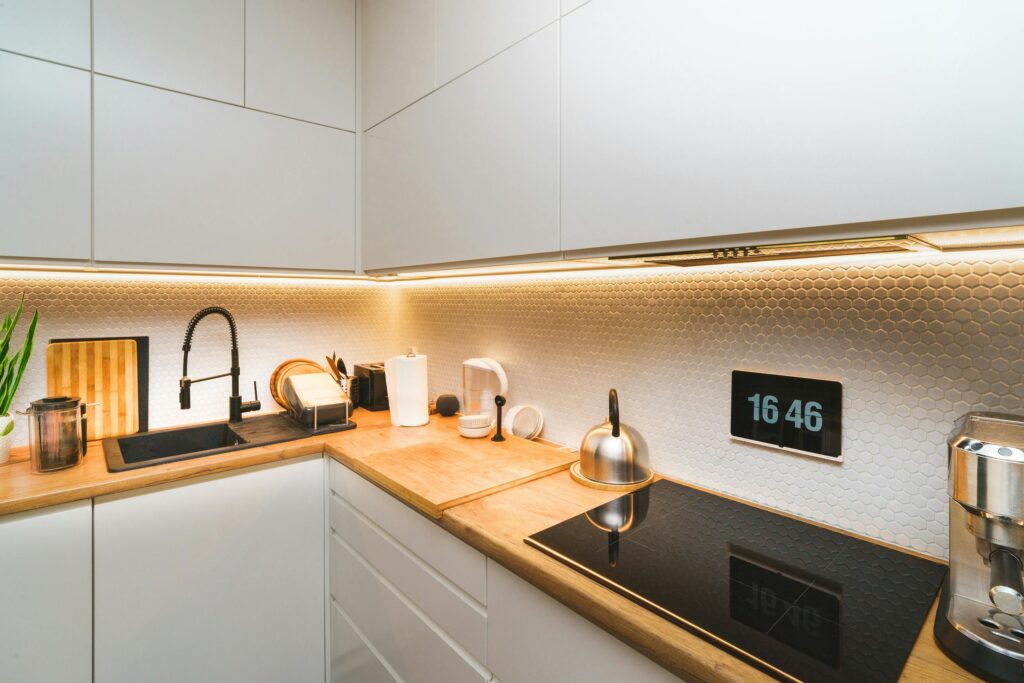
Kitchen Organization: Keeping Everything in Place
One of the keys to a successful kitchen is organization. A well-organized kitchen doesn’t just look better—it’s more efficient. When everything has a designated spot, cooking and cleaning become much easier, and you’ll save valuable time. Start with your kitchen cabinets. Consider using pull-out shelves, drawer organizers, and bins to keep your cookware, utensils, and pantry items neatly stored. For the countertop, try to keep only the essentials visible, like your coffee maker or a cutting board. Appliances like stand mixers or blenders can be stored out of sight when not in use. Don’t forget about your pantry. Invest in clear jars or bins to store dry goods, which will help you keep track of your ingredients. Finally, keep your drawers tidy with organizers for knives, spoons, and other tools. An organized kitchen not only looks great but also makes meal prep and cleanup easier and more enjoyable.
The Importance of Lighting in Your Kitchen
Lighting plays an essential role in any room, but in the kitchen, it’s especially important for both functionality and ambiance. A well-lit kitchen makes food preparation easier and more enjoyable, while also helping to create a warm, welcoming atmosphere for family and friends. Task lighting, such as under-cabinet lights or overhead spotlights, provides bright, focused light where you need it most, especially over the sink, stove, and countertops. Ambient lighting, such as pendant lights or chandeliers, adds style and warmth to the space. Consider incorporating dimmers so you can adjust the lighting based on the time of day or your activity. Don’t forget about accent lighting, which can highlight features like kitchen artwork or architectural details. Proper lighting can make a significant difference in how your kitchen feels and functions, so it’s worth investing in the right fixtures and planning your lighting layout carefully.
Sustainable Kitchen Choices
In today’s world, sustainability is becoming increasingly important in all areas of life, including the kitchen. Choosing sustainable materials and appliances not only helps reduce your environmental impact but can also save you money in the long run. For example, consider opting for energy-efficient appliances, such as refrigerators, dishwashers, and stoves, that use less electricity and water. Installing low-flow faucets and water-efficient dishwashers can also contribute to water conservation. When selecting countertops, look for eco-friendly options such as recycled materials or bamboo, which are renewable and durable. Additionally, try to avoid plastics and disposable items by opting for reusable containers, cloth napkins, and sustainable cleaning products. A sustainable kitchen doesn’t just reduce waste and conserve resources—it also helps create a healthier home environment for you and your family.
Trends in Kitchen Design
As with any aspect of home design, kitchen trends come and go. However, some trends have staying power and can add long-term value to your kitchen. One of the biggest trends in recent years is the move toward open shelving. Open shelves allow you to display decorative items, such as colorful bowls, glasses, and spices, while keeping your kitchen feeling airy and open. Another trend is the use of bold colors in kitchen cabinetry. While white and neutral tones remain popular, deep navy, forest green, and even black cabinets are becoming more common. Matte finishes are also trending, as they offer a sleek and sophisticated look while being easier to maintain than glossy finishes. Additionally, the focus on technology in the kitchen has grown, with smart appliances and voice-controlled faucets becoming more prevalent. While it’s fun to follow trends, it’s also important to create a kitchen that suits your personal style and long-term needs.
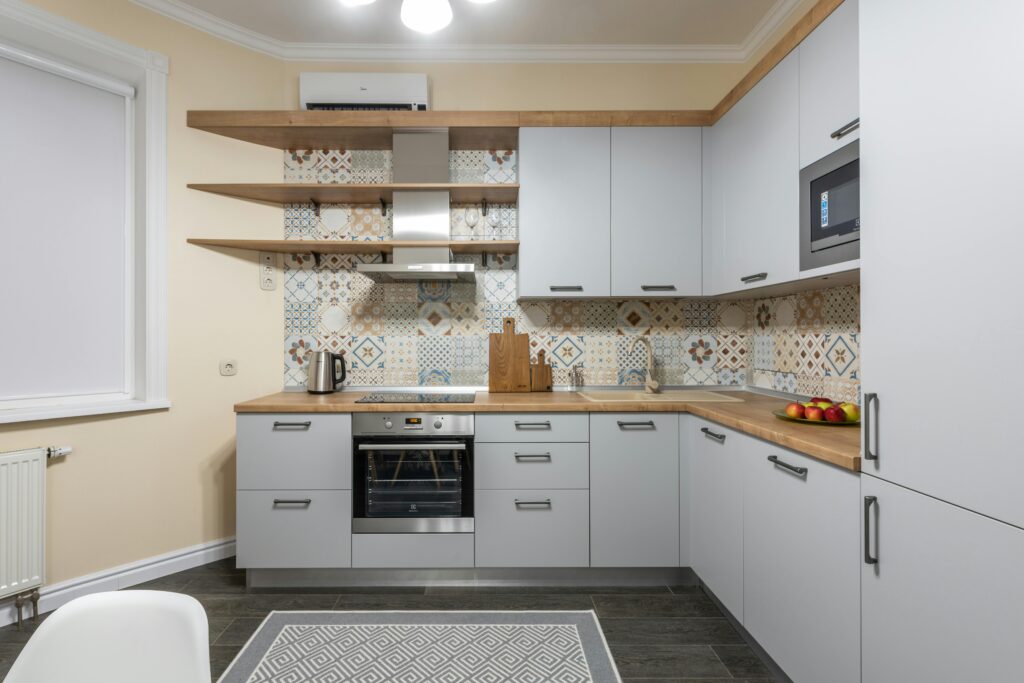
Maintaining Your Kitchen for Longevity
A kitchen is an investment, and taking care of it properly will ensure it serves you well for years to come. Regular maintenance is essential for keeping your kitchen in top condition. For instance, cleaning your sink and faucet regularly can prevent build-up and extend their lifespan. Similarly, ensure your kitchen appliances are regularly serviced to avoid costly repairs down the line. If you have a garbage disposal, run it with water and a little dish soap to keep it clean and functioning. Your countertops should be cleaned with the appropriate products to avoid scratches and stains, and wooden surfaces should be oiled to maintain their beauty. It’s also important to check for any plumbing issues, such as leaks or blockages, to prevent water damage. By staying on top of maintenance, you can enjoy a well-functioning kitchen for many years.
Budget-Friendly Kitchen Upgrades
Renovating or upgrading your kitchen doesn’t always have to be a pricey endeavor. There are many budget-friendly ways to enhance the look and functionality of your space without breaking the bank. Start with simple upgrades, such as swapping out your old kitchen hardware for new, modern handles or knobs. A fresh coat of paint on the cabinets or walls can transform the space, and you can even create a stylish backsplash using peel-and-stick tiles. If you’re in need of more storage, consider adding open shelving or an inexpensive kitchen cart. Another affordable way to improve your kitchen is by upgrading your lighting fixtures. Instead of splurging on high-end items, opt for trendy yet affordable options that still elevate the design. These small changes can make a big impact and help you achieve a refreshed look without the high cost of a full renovation.
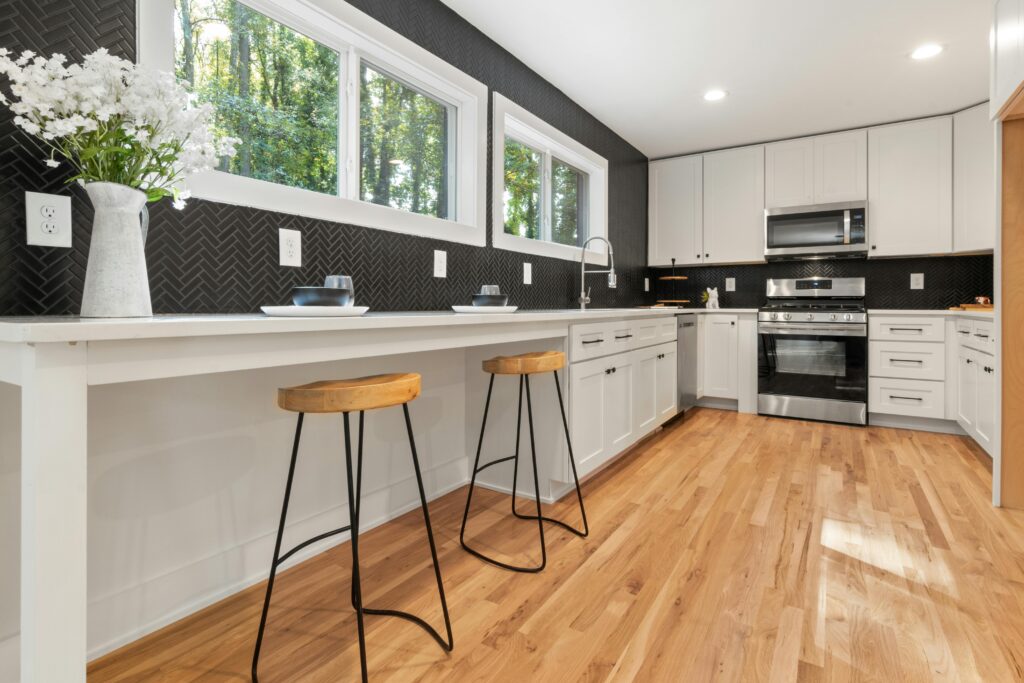
Author Remarks
At the end of the day, your kitchen is a reflection of who you are, your needs, and your personal style. Whether you’re upgrading an existing space or designing a new one, it’s important to create a kitchen that makes you feel comfortable, inspired, and ready to cook. From the sink to the countertops, the faucets to the lighting, every element of your kitchen plays a role in both its aesthetic appeal and its functionality. By carefully considering your needs, style preferences, and budget, you can create a kitchen that works for you and stands the test of time. So, roll up your sleeves, get creative, and start building your dream kitchen today!

whoah this blog is magnificent i love reading your posts. Keep up the great work! You know, lots of people are looking around for this information, you could aid them greatly.
so much superb info on here, : D.